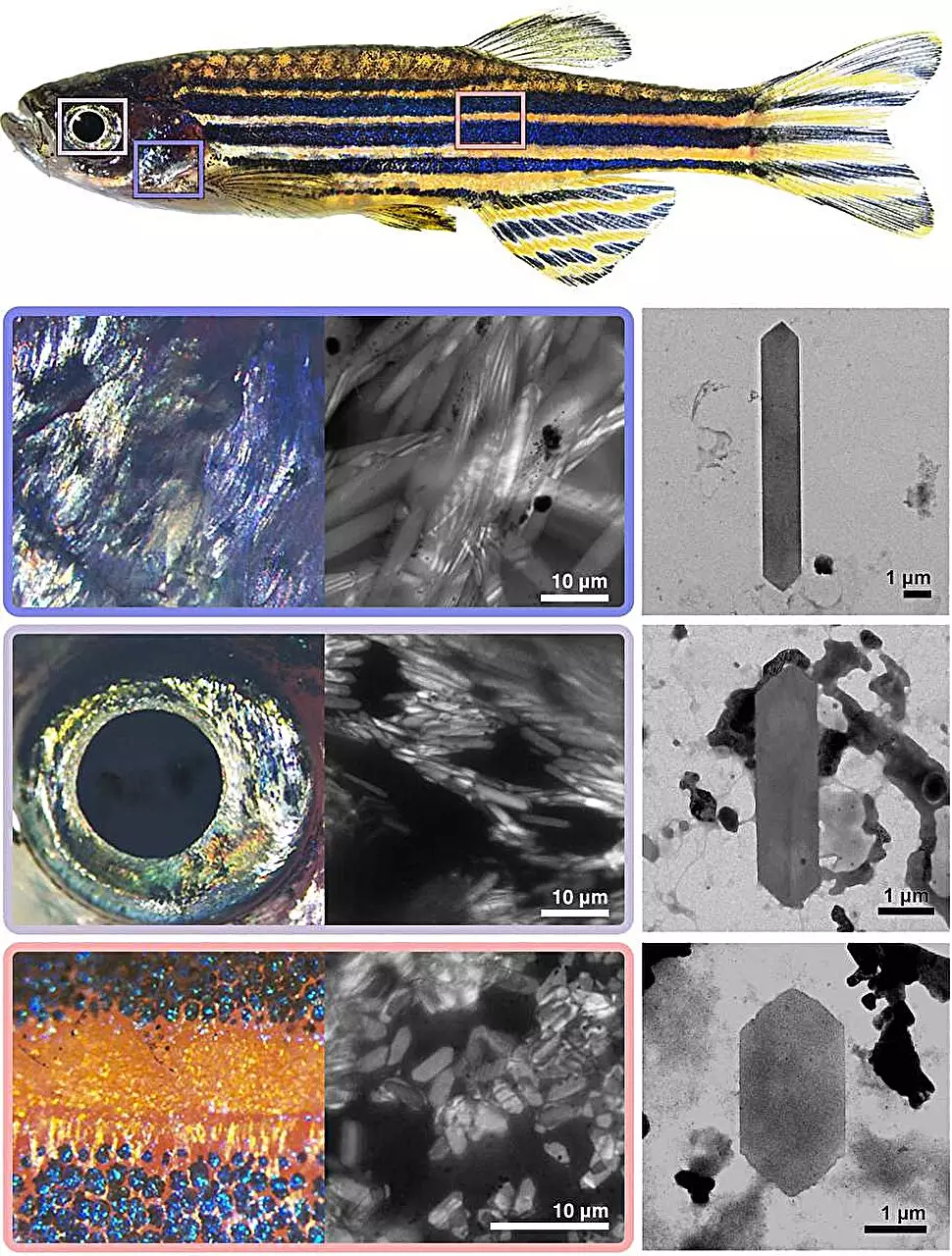At first glance, it might seem peculiar to associate fish, crabs, chameleons, and the notorious Walter White from the television series “Breaking Bad.” However, a common thread ties these seemingly disparate entities together: the remarkable ability to produce crystals. While Walter White’s creations are infamous for their illicit nature, the crystals formed by creatures like zebrafish serve entirely different, more constructive purposes, ranging from visual communication to environmental adaptation. This incredible diversity arises primarily from just two molecular components: guanine and hypoxanthine. The complexity and utility of the crystals synthesized by living beings captivated the scientific community, particularly given the lack of concrete explanations for the extensive variability observed among these biological crystals. Recent research from the Weizmann Institute of Science has finally begun to illuminate this mystery, focusing on the zebrafish, an exemplary model for studying crystal formation.
Zebrafish hold a pivotal role in this research, showcasing an array of strikingly beautiful crystals in various body parts. The detailed analysis revealed that these crystals differ considerably in shape, composition, and arrangement depending on their location in the body. The operculum, or gill cover, features long and slender crystals, while the fins exhibit shorter, differently structured crystals. Dr. Dvir Gur, leading the research, asserts that the zebrafish serves as an optimal subject for studying the biochemical and genetic control of crystal properties. This unique focus allows researchers to eliminate confounding variables inherent in comparing disparate species and their various genetic makeups.
The intricacies of determining crystal formation relied heavily on understanding the balance of guanine and hypoxanthine in each crystal type. By using sophisticated electron microscopy techniques, researchers were able to document the distinct morphologies produced by varying molecular ratios. This method bears similarity to culinary arts where the right mixture of ingredients yields unique flavors and textures. Just as a pastry chef manipulates the cream-to-chocolate ratio to create different desserts, the zebrafish modulates its molecular building blocks to produce a broad spectrum of crystal shapes, each tailored for specific functions.
The Molecular Mechanics Behind Crystal Diversity
Diving deeper into the mechanisms that regulate crystal formation, researchers turned their attention to the iridophores—specialized cells responsible for producing these crystals. Rachel Deis, a Ph.D. student on the research team, undertook the task of isolating these cells and studying their components in detail. Her findings were both surprising and enlightening. Iridophores contained an unexpected abundance of enzymes responsible for synthesizing the crystals’ molecular building blocks while simultaneously exhibiting lower levels of other related enzymes. This unexpected dichotomy led researchers to hypothesize that different populations of iridophores possess unique balances of these enzymes, directly influencing the structure and utility of the crystals produced in various tissues.
This nuanced understanding sheds light on a critical aspect of evolutionary biology: how organisms have adapted over time to generate diverse biological applications from a limited number of building blocks. While humans rely on a solitary enzyme for the final steps of guanine synthesis, zebrafish employ multiple enzymes, enabling them to craft different crystal types without interfering with essential cellular processes.
To validate their hypotheses, researchers engineered zebrafish with altered enzyme expression, specifically targeting pnp4a, an enzyme crucial for guanine production. Conclusively, these modified fish exhibited a marked shift in their crystal morphology and density, aligning closely with those non-localized cells producing skin pigments. This fascinating experiment confirmed the researchers’ theories about enzyme balance and its significant impact on the resulting crystal structures.
Overall, this innovative research not only sheds light on the intricate biochemical pathways that facilitate crystal production but also opens avenues for potentially biomimicking these processes in various technological applications. As scientists increasingly delve into nature’s blueprint, the potential for synthesizing advanced biomaterials derived from concepts found in the natural world becomes more apparent. The study exemplifies how interdisciplinary collaboration between biologists, chemists, and optical experts can lead to breakthroughs that enrich our understanding of life’s complexities.
The findings surrounding zebrafish crystal production demonstrate the elegant simplicity with which nature operates. From just two foundational molecules, a vista of biological diversity emerges, underpinned by sophisticated genetic and biochemical mechanisms. This intricate dance between molecular ratios, enzyme balances, and cellular adaptations symbolizes a fundamental principle of biology: nature is an ingenious architect, crafting complex structures and functions from straightforward building blocks. Insights gained from such studies continue to inspire not only scientific curiosity but also applications that promote sustainability, innovation, and a deeper appreciation of the natural world’s intricacies.

